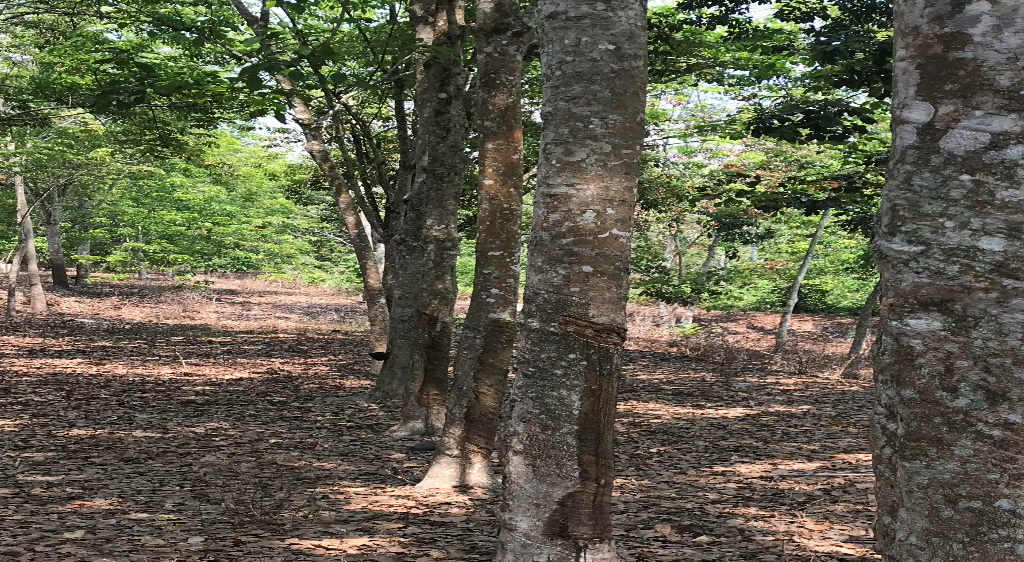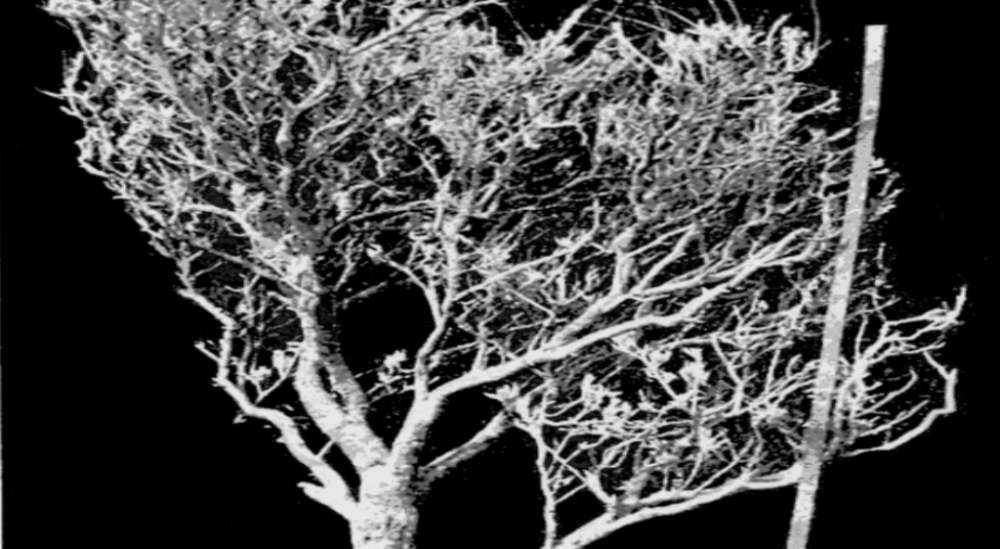Mattresses
SHOP STANDARD SIZES
SHOP STANDARD SIZES
SHOP BY TYPE
SHOP BY BRAND
RV Mattresses
Adjustable Beds
Shop By Brand
Shop By Size
Oversized Beds
List of Latex Trees
When you hear the word “latex” you may immediately think “rubber”, and you would be right. However, when people think of rubber, they may think about the artificial kind that chemists and engineers produce in large factories. The truth is, there is natural rubber which comes from plants and is the original source of rubber. Latex is what is used to make natural rubber. Latex is a milky fluid that flows in the inner portions of the bark of many tropical and subtropical flowering trees and shrubs. Most plants have white latex, but some can have yellow, orange, and even scarlet. Latex is collected by tapping the plants, similar to how sap is collected. Latex has a complex composition of various molecules. After collection, the latex is processed, with natural rubber being the most important product.
Highlights on Latex Trees
- Latex can be collected from about 10% of all flowering plant species.
- Total natural rubber production worldwide reached 13.9 million metric tons in 2018.
- Asian countries near the equator produce 90% of the natural rubber in the world.
- Thailand is the number 1 producer of natural rubber.
- Around 70% of latex is used to make tires.
- Latex is like blood. When latex trees are damaged, latex oozes and coagulates when exposed to air.
- Latex trees can grow between 100 to 130 feet (around 30 to 40 m).
- An average latex tree produces 19 lbs (around 8.6 kg) of latex every year.
List of Latex Trees
1. Hevea brasiliensis
This plant species is most commonly known as the rubber tree or rubber plant because it has been the major source of latex for making natural rubber. It is native to rainforests in the Amazon region which includes the countries of Brazil, Venezuela, Ecuador, Colombia, Peru, and Bolivia. However, countries of Western Africa and Southeast Asia also invested in the plant because of its economic significance. On the other hand, parts of some countries in East Africa, such as some parts of Tanzania, consider Hevea brasiliensis as invasive. The ancient Olmec, Maya, and Aztec were the first to discover the rubber tree. They used the latex to make rubber to waterproof their clothes and make shoes.
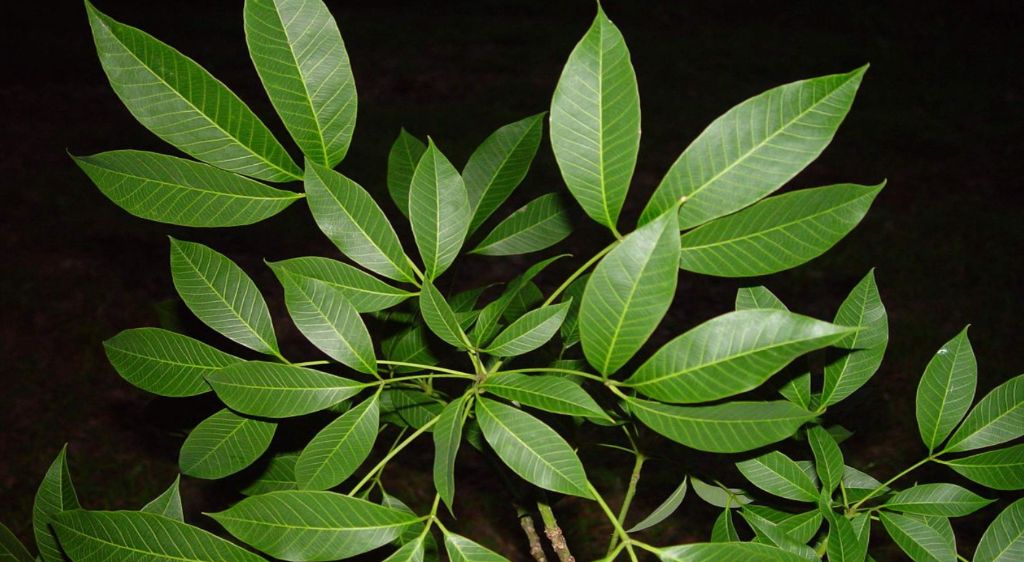
2. Hevea guianensis
Hevea guianensis is another species of rubber tree that belong to the same genus as the rubber tree. The plant is native to the rainforests of Ecuador, Venezuela, the Guyanas, Brazil, Colombia and Peru. It tends to grow on soils that are well-drained and are only lightly inundated, on river banks, in gallery forests, savannah forests and wooded slopes. The tree can grow to more than 30 m (or more than 100 ft). Its latex is cream-yellow in color, but its quality is not as good as that of Hevea brasiliensis. Aside from the latex, the seeds are also a crucial food source for some native people in the Amazon. However, the seeds contain cyanic compounds and are poisonous unless treated properly.
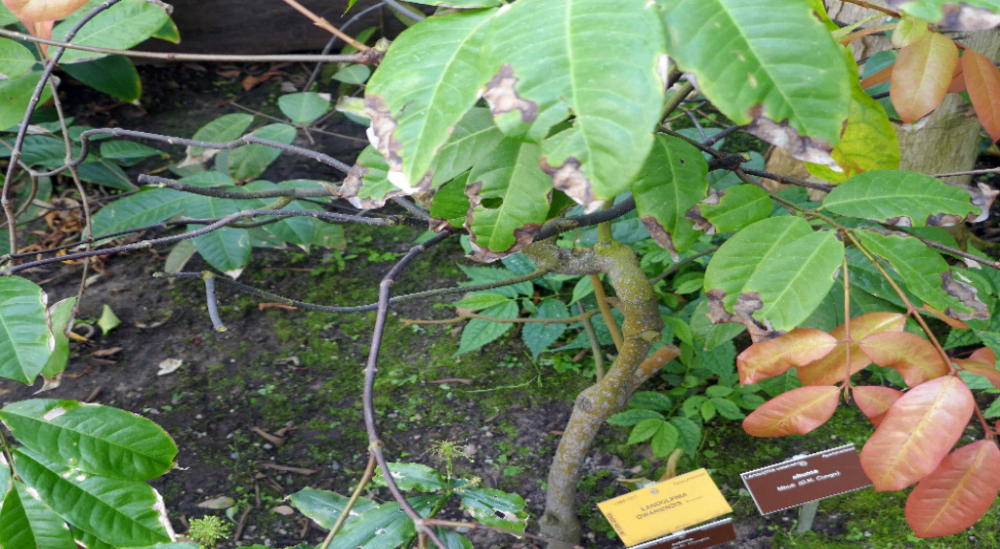
3. Landolphia owariensis
This plant is commonly known as eta. It is native to the tropics of Africa, especially the Congo, where it is also known as Congo rubber. However, you can also find the plant growing in Guinea in West Africa to Sudan and Tanzania in East Africa. It grows as a shrub in a savannah, but becomes a large climbing plant in a forest. The stems are like vines, climbing over other plants in the forest. The stems only have a basal diameter of 30 cm (about 1 ft), but they can climb 100 m (about 330 ft) or more. Because of this trait, eta is also known as the white rubber vine. Aside for its latex, its fruits are also good for consumption. People can eat the fruit fresh or ferment it to make alcohol. Eta is also in traditional medicine since its leaves and stems have antimicrobial, anti-inflammatory, purgative, and other health-benefiting properties.

4. Manilkara zapota
This tree is native to central America and the West Indies. Its latex is rich in polyterpene, which is the main compound that is responsible for making natural rubber. Unfortunately the latex from Manilkara zapota does not produce durable rubber. It was, however, used to create natural chewing gum. Although the latex may still be used for chewing gum, it is commonly diluted, while some have completely replaced it with latex from other trees. The fruit, which is known as sapodilla, has its uses though. Sapodilla has a fleshy pulp that is used to make sapodilla custard and ice cream.
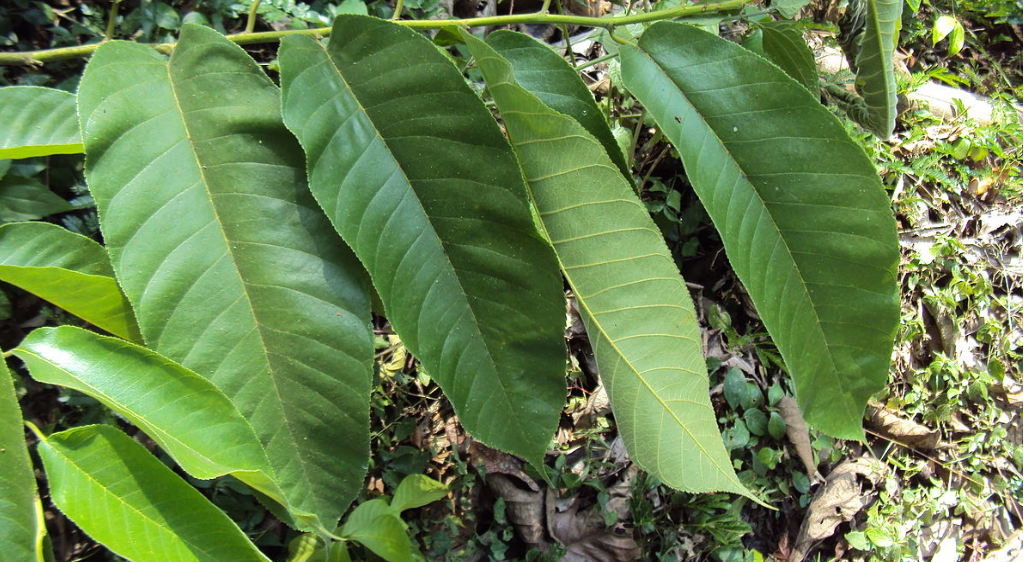
5. Castilla elastica
This plant is also known as the Panama rubber tree, although it is native to southern Mexico, Central America, and the north-western parts of South America. The tree grows to about 10 to 30 m (or about 33 to 100 ft), but it can also reach as high as 60 m (or nearly 200 ft). The bole can be between 30 to 90 cm (or about 1 to 3 ft) in diameter, with buttresses forming at the base of large trees. The plant was widely used as a source of latex, but it was eventually overtaken by Hevea brasiliensis. However, it is still used for that purpose to some extent. Castilla elastica is regarded as an environmental weed in some parts of the world, such as the Pacific, and is even included in the Global Invasive Species Database.
6. Parthenium argentatum
Parthenium argentatum is more commonly known as guayule, which comes from the Nahuatl word ulli/olli, meaning “rubber”. It is native to southwestern North America up to Mexico and Texas. The guayule is a shrub that can grow to about 1 m (or 3 ft). It requires full sun and soil that is well-drained. Sandy soil is best for this plant, but most soils will still do, except for clay. The mature plants can withstand drought. It grows well but gives poor yield of latex in areas with lots of rainfall. More latex can be obtained if the plant is prevented from flowering. The guayule, however, is unsuited for climates with winters where temperatures fall below -10°C (14°F).
Latex Tree’s History and Statistics
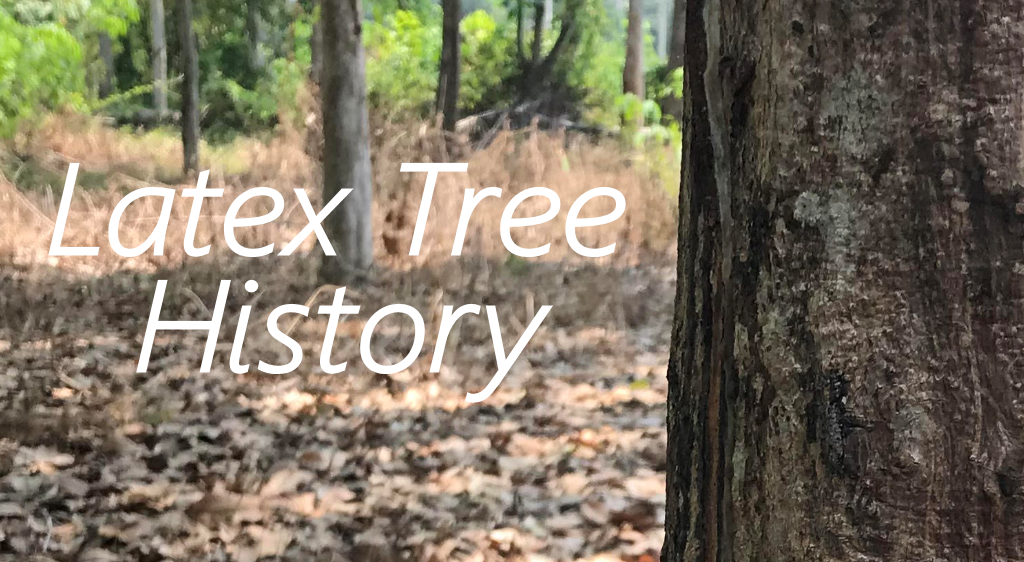
8. Tapping the latex Hevea brasiliensis tree usually starts in the 5th to 7th year after planting.
Tappers use a special knife to create an incision on the bark. Their goal is to reach the lactiferous vessels, which contain the latex. However, the lactiferous vessels are next to the cambium, which is the layer in the plant responsible for thickness growth. Tappers must be careful because if they cut too deep, they could damage the cambium.
9. When tapping, tappers also use a metal ribbon that is about 1.1 m (3.6 ft) long.
This metal ribbon is also at an angle of 30° to the horizontal. Tappers roll the ribbon around the tree and make a cut along the ribbon. They then make a vertical channel from the lower edge of the cut. The cut and the channel must be deep enough to reach the lactiferous vessels.
10. Cuts must be around 4.5 mm deep.
On the other hand, the vertical channel is about 25 cm long. Tappers put a gutter at the lower end of the channel. They then put a latex cup below the gutter. The latex flows along the cut, into the channel, through the gutter, and drops into the cup.
11. A tapper can tap 440 latex trees.
Each tapper can have 3 groups of 440 trees since he since he can tap each tree only twice a week.
12. Tapping of latex trees can continue for 25 to 30 years.
Beyond this time, the trees produce less latex. When this happens, the trees are removed and replaced with new seedlings. Before, trees that no longer produce latex are burned, but now the wood is harvested for other uses such as for making furniture.
13. In the 19th century, Brazil was the primary supplier of latex.
However, as the world was entering the 20th century, seedlings of latex trees were smuggled out of Brazil into Southeast Asia. Today, Southeast Asian countries are the largest suppliers of natural rubber from latex.
14. It was in 1839 when vulcanizing was accidentally invented.
In that year, Charles Goodyear accidentally dropped some India rubber mixed with sulfur on a hot stove. The rubber charred like leather, but it remained plastic and elastic. This eventually led to the development of vulcanization. Vulcanization is the chemical process wherein rubber is heated with sulfur to improve its properties. Vulcanization converts the molecules of rubber into a 3D network of interconnected chains through cross-links of sulfur. The final product has higher tensile strength, higher resistance to swelling and abrasion, and remains elastic over a larger temperature range.
15. The rubber industry expanded in the 19th century when automobiles were invented.
Because of the large demand, river towns like Manaus, Brazil quickly became center of commerce. Manaus became the heart of the rubber trade. Within a few years, Manaus had Brazil’s first telephone system, streetcar tracks that stretched for more than 25 km (16 miles), and an electric grid that can serve a million people even though the town only had a population of 40,000. Today, tires remain the largest application of latex.
16. It was in 1929 when latex was used to make foam.
It took the Dunlop company 5 years to figure out how to turn latex into foam. Edward Arthur Murphy, a British scientist from the Dunlop company, used a cake mixer to whip latex. The process introduced air into the liquid latex, producing bubbles that gave the material cushioning properties. The first latex mattress was introduced in 1931.
Conclusion
From the tires that let our cars travel, to the soft cushiony mattresses that give us a restful sleep, rubber is a material that is indispensable in the modern world. Who would have thought that one of the most used things in the world would come from the milky liquid of a plant? Because of the importance of rubber, latex trees have a significant economic value. Have some appreciation for latex trees the next time you ride a car or lie in bed
References
Agrawal and Konno, 2009:
https://www.annualreviews.org/doi/10.1146/annurev.ecolsys.110308.120307
https://www.statista.com/statistics/275387/global-natural-rubber-production/
GEP:
https://www.gep.com/mind/blog/global-natural-rubber-production-all-set-to-increase-in-2019
Coruba:
https://www.coruba.co.uk/blog/the-biggest-rubber-producing-countries/
Rainforest Alliance:
https://www.rainforest-alliance.org/species/rubber-tree
Alliance Rubber Company:
https://www.rubberband.com/blog/265/facts-rubber-tree
Witt et al., 2018:
https://www.tandfonline.com/doi/full/10.1080/0035919X.2018.1529003
Useful Tropical Plants:
http://tropical.theferns.info/viewtropical.php?id=Landolphia+owariensis
Useful Tropical Plants:
http://tropical.theferns.info/viewtropical.php?id=Hevea+guianensis
Palomar Community College:
https://www2.palomar.edu/users/warmstrong/ecoph13.htm
Purdue University:
https://hort.purdue.edu/newcrop/morton/sapodilla.html
Useful Tropical Plants:
http://tropical.theferns.info/viewtropical.php?id=Castilla+elastica
BioNet-EAFRINET Keys and Fact Sheets:
Useful Temperate Plants:
http://temperate.theferns.info/plant/Parthenium+argentatum
Food and Agriculture Organization:
http://www.fao.org/3/AD221E/AD221E06.htm
Food and Agriculture Organization:
http://www.fao.org/3/ac126e/ac126e03.htm
Britannica:
https://www.britannica.com/technology/vulcanization
Mongabay:
https://rainforests.mongabay.com/10rubber.htm
Murphy, E. A., & Owen, E. W. B. (1929). US1929603A. Washington, DC: U.S. Patent and Trademark Office.
Neuwinger, H. D. (1996). African ethnobotany: Poisons and drugs: Chemistry, pharmacology, toxicology. Germany: Chapman & Hall
National Research Council. (2008). Lost crops of Africa, Vol. III: Fruits. Washington, DC, USA: National Academies Press.
Quattrocchi, U. (2012). CRC world dictionary of medicinal and poisonous plants. Florida, USA: CRC Press
Rapra Technology, Ltd. (2002). Latex 2002: International Conference on Latex and Latex Based Products. Berlin, Germany: Rapra Technology, Ltd.
© 2025 Rest Right Mattress. All Rights Reserved.


